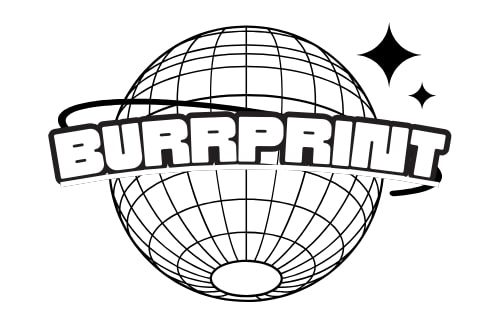When it comes to maneuvering through the landscape of marketing strategies, the concept of a print strategy might seem like a relic of the past, overshadowed by the allure of digital campaigns. However, before you dismiss it as outdated, consider this: a well-crafted print strategy could be the missing piece that elevates your brand's visibility and resonance in a cluttered digital world. So, how exactly can a print strategy complement and enhance your overall marketing efforts?
Key Takeaways
- Print strategy involves planning and implementing print media for marketing success.
- It includes elements like layout, messaging, and brand communication.
- Identifying target audience is crucial for effective print strategy.
- Design and branding consistency are essential for print strategy impact.
- Analyzing performance data helps optimize print campaigns for better results.
Importance of Print Strategy
Understanding the significance of a well-planned print strategy is essential for achieving marketing success in today's competitive landscape. Print strategy effectiveness can make or break a marketing campaign. Your approach to print strategy implementation must be meticulous and well-thought-out to guarantee maximum impact. By leveraging the power of print media, you can reach a targeted audience in a tangible and memorable way. The effectiveness of your print strategy lies in its ability to convey your brand message clearly and creatively.
When considering print strategy effectiveness, it is pivotal to align your objectives with the overall marketing goals. Your print materials should seamlessly integrate with your digital efforts to create a cohesive brand experience. From brochures to direct mail campaigns, each element of your print strategy plays a crucial role in engaging your audience and driving results. Embrace innovation and creativity in your print strategy implementation to stand out in a crowded marketplace. Remember, a well-executed print strategy can elevate your brand and set you apart from the competition.
Elements of a Print Strategy
To develop a thorough print strategy that resonates with your target audience, carefully consider the key elements that will shape your campaign's effectiveness. The print layout plays a vital role in catching the reader's eye and conveying your message. It includes the overall design, typography, images, and colors used in your print materials. A well-thought-out layout can enhance readability and engagement.
Equally important is the print messaging. This encompasses the content of your print materials, including headlines, body copy, calls to action, and any other text included. Your messaging should be clear, concise, and tailored to appeal to your target audience. It should effectively communicate your brand's value proposition and key selling points.
Target Audience Identification
Identifying your target audience is a critical step in crafting a successful print strategy that effectively reaches and engages the right demographic. By understanding your audience's preferences, behaviors, and characteristics, you can tailor your print campaigns for maximum impact. This involves audience segmentation to divide your target market into specific groups based on shared traits, allowing for more personalized and targeted campaigns. Demographic targeting focuses on variables like age, gender, income, and education level to pinpoint the most receptive audience. Psychographic profiling explores further into the psychological aspects of consumer behavior, such as values, interests, and lifestyles, providing insights for more nuanced and engaging messaging.
| Audience Segmentation | Campaign Personalization |
|---|---|
| Divide market into specific groups | Tailor campaigns for maximum impact |
| Identify shared traits | Create personalized messages |
| Enhance targeting precision | Increase engagement levels |
| Optimize marketing efforts | Improve conversion rates |
Design and Branding Considerations
Consider integrating cohesive design elements and brand identity to establish a strong visual presence that resonates with your target audience. Design trends play an important role in capturing attention and conveying your message effectively. Stay updated on current design trends to guarantee your print materials are visually appealing and engaging. Consistency is vital when it comes to branding. Make sure that your print materials align with your brand's visual identity, including colors, fonts, and overall style. This consistency helps in reinforcing brand recognition and trust among your audience.
Brand consistency across all print materials is essential for creating a unified brand image. Consistent use of logos, color schemes, and typography reinforces your brand identity and helps customers recognize your brand instantly. When designing print materials, consider how they will contribute to your overall brand story and messaging. By incorporating brand elements strategically, you can create a cohesive and memorable brand experience for your audience. Stay true to your brand's values and personality in every design decision to strengthen brand loyalty and recognition.
Print Material Selection
For best results in your print marketing efforts, carefully assess the suitability of various print materials to effectively convey your brand message and engage your target audience. When selecting print materials, consider current print material trends and innovative print production techniques to make your marketing materials stand out. Utilizing unique textures, finishes, and formats can enhance the visual appeal and tactile experience of your print materials, leaving a lasting impression on your audience.
To help you make informed decisions, here is a comparison table highlighting some popular print materials and their key features:
| Print Material | Key Features |
|---|---|
| Glossy Paper | Provides vibrant colors and a shiny finish. |
| Recycled Cardstock | Eco-friendly option with a textured feel. |
| Matte Finish | Elegant look with a non-reflective surface. |
Print Distribution Channels
To effectively maximize the reach and impact of your print marketing campaign, it is essential to strategize your selection of appropriate print distribution channels. Here are three key channels worth exploring:
- Retail Locations: Utilizing retail locations for distributing your print materials can be highly effective. Placing flyers or brochures in strategic areas within stores can catch the attention of potential customers while they shop, increasing brand visibility.
- Direct Mail: Sending print advertising materials directly to consumers' mailboxes can be a targeted and personalized approach. This method allows you to tailor your message to specific demographics, increasing the likelihood of engagement with your print promotions.
- Events and Tradeshows: Participating in events and tradeshows provides an opportunity to distribute your print materials to a captive audience. Attendees are often more receptive to receiving and retaining printed materials in these settings, making it a valuable channel for reaching potential customers with your print advertising.
Measurement and Analytics
When it comes to print strategies, understanding the significance of measurement and analytics is essential. Tracking your print campaign, analyzing its performance, and making data-driven decisions are key components to guarantee the success of your print marketing efforts. By utilizing these points effectively, you can optimize your print strategies and achieve your desired outcomes.
Tracking Print Campaign
Effectively tracking the performance of your print campaign through precise measurement and analytics is crucial for optimizing your marketing strategies and maximizing your ROI. Here are three key steps to enhance your print campaign tracking and effectiveness:
- Implement unique tracking mechanisms such as custom URLs or QR codes on print materials to monitor engagement and conversions accurately.
- Utilize analytics tools to gather data on print campaign performance, including metrics like response rates, customer demographics, and conversion rates.
- Regularly analyze the collected data to identify trends, areas for improvement, and successful strategies, enabling you to adjust your print strategy for best results.
Analyzing Print Performance
Enhance your print campaign's effectiveness by delving into the analysis of its performance through meticulous measurement and analytics. By conducting a thorough print performance analysis, you can identify what aspects of your strategy are working well and where there is room for improvement. This optimization process is essential for maximizing your campaign's impact and return on investment. To help you understand the importance of print performance analysis, here is a table showcasing key metrics and their significance:
| Metric | Significance |
|---|---|
| Conversion Rate | Indicates the effectiveness of your call-to-action |
| Cost per Acquisition | Measures the cost of acquiring a new customer |
| Return on Investment | Evaluates the profitability of your print campaign |
| Customer Engagement | Reflects the level of interaction with your audience |
Data-Driven Decision Making
To make informed decisions based on data and insights, leverage measurement and analytics in your print strategies. Data analysis plays an essential role in understanding the effectiveness of your print campaigns. Here are three key ways to incorporate data-driven decision making into your print strategy:
- Track Key Metrics: Utilize tools to monitor print performance metrics such as conversion rates, response rates, and ROI.
- Segmentation and Targeting: Use data analysis to segment your audience and tailor your print materials to specific demographics or customer segments.
- Iterative Improvement: Continuously analyze data to identify trends, optimize strategies, and make informed decisions for future print campaigns. Strategic planning based on data insights can lead to more impactful and cost-effective print strategies.
Integration With Digital Marketing
Integrating print strategies with digital marketing can greatly amplify the reach and impact of your campaigns. By leveraging the Print Digital synergy and fostering Cross Channel Engagement, you can create a cohesive and impactful marketing strategy that resonates with your target audience across various touchpoints.
| Benefits of Integration | Description | Examples |
|---|---|---|
| Consistent Brand Messaging | Ensuring your brand message is coherent across both print and digital platforms. | Using the same visuals and tone in print ads and social media posts. |
| Enhanced Audience Engagement | Engaging with your audience through multiple channels to increase interaction and response rates. | Encouraging customers to visit your website through QR codes on print materials. |
| Data-driven Optimization | Utilizing data from both print and digital campaigns to refine strategies and improve ROI. | Tracking response rates from QR codes to understand customer behavior and preferences. |
Budgeting for Print Strategy
When considering budgeting for print strategy, focus on cost-effective print solutions and maximizing your print campaign ROI. By strategically allocating funds, you can guarantee that your print materials are impactful and align with your overall marketing goals. Analyzing the expenses and returns will help you make informed decisions on where to invest for the best results.
Cost-Effective Print Solutions
Incorporating a well-thought-out budget for print strategy can greatly enhance cost-effectiveness in your print solutions. To maximize your budget and achieve cost-effective print solutions, consider the following:
- Leverage Print Innovation and Sustainability
Embrace eco-friendly print materials and processes to reduce costs and appeal to environmentally-conscious consumers.
- Opt for Advanced Print Technology for Efficiency
Invest in modern printing technologies like digital printing or automation to streamline production processes and reduce expenses.
- Implement Print Volume Management
Carefully manage the volume of prints to avoid unnecessary costs associated with excess printing and storage.
Maximizing Print Campaign ROI
To enhance the effectiveness of your print campaign and maximize return on investment, strategically allocating your budget for print strategy is essential. When considering print campaign optimization, it's important to allocate funds thoughtfully across various elements such as design, printing, distribution, and tracking. By analyzing past campaign performances and industry trends, you can identify areas where budget allocation can be adjusted to yield better results. Consider investing in print strategy innovation to stay ahead of competitors and attract your target audience effectively. Keep an eye on emerging technologies and creative print solutions that can elevate your campaign impact while staying within budget constraints. A well-planned budget allocation aligned with your print strategy goals can significantly boost your ROI and overall campaign success.
Future Trends in Print Marketing
As the landscape of marketing continues to evolve, print strategies are poised to adapt and innovate in response to emerging trends and technologies. In looking ahead to the future of print marketing, several key trends are likely to shape the industry:
- Personalization Through AI: Leveraging innovative technologies like artificial intelligence (AI) will enable brands to create highly personalized print materials tailored to individual consumer preferences. By analyzing data on consumer behavior trends, AI can help customize content and design elements for maximum impact.
- Integration of Augmented Reality (AR): The integration of AR into print materials will offer interactive and immersive experiences for consumers. By bridging the physical and digital worlds, AR can enhance engagement levels and provide valuable insights into consumer interactions with printed content.
- Sustainable Print Practices: As environmental consciousness grows among consumers, sustainable print practices will become increasingly important. Adopting eco-friendly materials, inks, and production processes will not only appeal to environmentally conscious consumers but also reflect positively on brand image and reputation.
Frequently Asked Questions
How Does Print Strategy Impact Brand Loyalty?
When considering how print strategy impacts brand loyalty, it's important to understand that your brand image is directly influenced by the materials you put out. By creating visually appealing and informative print materials, you enhance the overall customer experience. From brochures to packaging, each printed piece is an opportunity to reinforce your brand values and connect with your audience on a tangible level. This consistency builds trust and fosters long-term brand loyalty.
What Role Does Sustainability Play in Print Strategy?
Sustainability is the bedrock of any modern print strategy. Embracing sustainable practices not only lessens your environmental impact but also enhances your brand image. By incorporating eco-friendly materials and processes, you show your commitment to a greener future, resonating with environmentally conscious consumers. With sustainable print strategies, the possibilities are as vast as the ocean, allowing you to make a positive impact while standing out in a sea of competition.
Can Print Strategy Help With Customer Retention?
Incorporating a print strategy can greatly enhance customer engagement and loyalty. By utilizing print materials effectively, you can improve marketing effectiveness and ultimately boost customer retention rates. Print materials offer a tangible and personalized way to connect with your audience, leaving a lasting impression that digital methods sometimes can't achieve. Leveraging print in your overall strategy can help foster stronger relationships with customers, leading to increased loyalty and repeat business.
How Does Personalization Fit Into Print Strategy?
When it comes to personalization in your print strategy, think of it as tailoring a bespoke suit for each of your customers. By customizing your printed materials, you can create a unique and memorable experience that resonates with your target audience. Personalization benefits not only enhance customer engagement but also increase the likelihood of retention. By incorporating personal touches, you can make your print strategy more impactful and effective in reaching your audience.
What Are the Challenges of Integrating Print With Digital Marketing?
When integrating print with digital marketing, challenges arise due to differing methods and audience engagement. Strategies must be adapted to guarantee coherence between these platforms. Understanding the unique strengths of print and digital is essential. Balancing the tactile experience of print with the interactive nature of digital can be complex. By developing innovative strategies that leverage the strengths of both mediums, you can overcome these challenges and create a cohesive marketing approach.
Conclusion
You've learned the critical components of a successful print strategy: identifying your target audience, designing with branding in mind, selecting the right print materials, and measuring performance. Did you know that 82% of consumers trust print ads more than any other medium? This statistic underscores the enduring power of print marketing in building trust and credibility with your audience. By incorporating these elements into your print strategy, you can create impactful and memorable campaigns that resonate with consumers.







